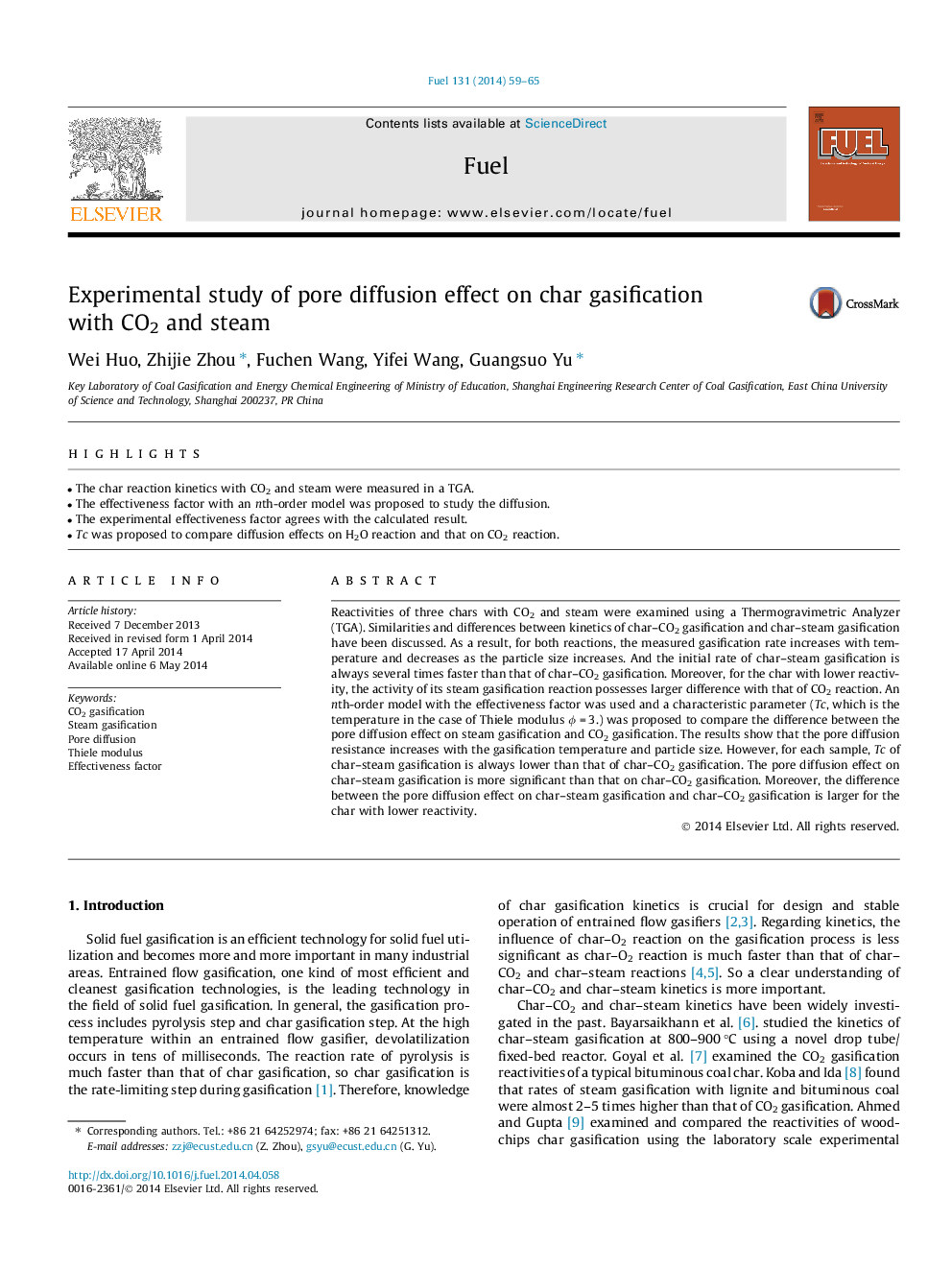| کد مقاله | کد نشریه | سال انتشار | مقاله انگلیسی | نسخه تمام متن |
|---|---|---|---|---|
| 206222 | 461150 | 2014 | 7 صفحه PDF | دانلود رایگان |

• The char reaction kinetics with CO2 and steam were measured in a TGA.
• The effectiveness factor with an nth-order model was proposed to study the diffusion.
• The experimental effectiveness factor agrees with the calculated result.
• Tc was proposed to compare diffusion effects on H2O reaction and that on CO2 reaction.
Reactivities of three chars with CO2 and steam were examined using a Thermogravimetric Analyzer (TGA). Similarities and differences between kinetics of char–CO2 gasification and char–steam gasification have been discussed. As a result, for both reactions, the measured gasification rate increases with temperature and decreases as the particle size increases. And the initial rate of char–steam gasification is always several times faster than that of char–CO2 gasification. Moreover, for the char with lower reactivity, the activity of its steam gasification reaction possesses larger difference with that of CO2 reaction. An nth-order model with the effectiveness factor was used and a characteristic parameter (Tc, which is the temperature in the case of Thiele modulus ϕ = 3.) was proposed to compare the difference between the pore diffusion effect on steam gasification and CO2 gasification. The results show that the pore diffusion resistance increases with the gasification temperature and particle size. However, for each sample, Tc of char–steam gasification is always lower than that of char–CO2 gasification. The pore diffusion effect on char–steam gasification is more significant than that on char–CO2 gasification. Moreover, the difference between the pore diffusion effect on char–steam gasification and char–CO2 gasification is larger for the char with lower reactivity.
Journal: Fuel - Volume 131, 1 September 2014, Pages 59–65